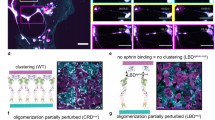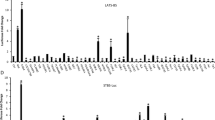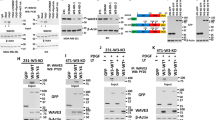Abstract
Low molecular weight protein tyrosine phosphatases (LMW-PTPs) are an enzyme family that plays a key role in cell proliferation control by dephosphorylating/inactivating both tyrosine kinase receptors (such as PDGF, insulin, and ephrin receptors) and docking proteins (such, as β-catenin) endowed with both adhesion and transcriptional activity. Besides being a frequent event in human tumors, overexpression of LMW-PTP has been recently demonstrated to be sufficient to induce neoplastic transformation. We recently demonstrated that overexpression of LMW-PTP strongly potentiates the stability of cell–cell contacts at the adherens junction level, which powerfully suggests that LMW-PTP may also contribute to cancer invasivity. Focusing on mechanisms by which LMW-PTP is involved in cancer onset and progression, the emerging picture is that LMW-PTP strongly increases fibronectin-mediated cell adhesion and mobility but, paradoxically, decreases cell proliferation. Nevertheless, LMW-PTP-transfected NIH3T3 fibroblasts engrafted in nude mice induce the onset of larger fibrosarcomas, which are endowed with higher proliferation activity as compared to mock-transfected controls. Quite opposite effects have been obtained with engrafted fibroblasts transfected with a dominant-negative form of LMW-PTP. Notably, in sarcoma extracts, LMW-PTP overexpression greatly influences the ephrin A2 (EphA2) but not PDGF receptor or β-catenin tyrosine phosphorylation. The high association of dephosphorylated EphA2 overexpression with most human cancers and our observation that cell growth stimulation by LMW-PTP overexpression is restricted to the in vivo model, strongly suggest that LMW-PTP oncogenic potential is mediated by its EphA2 tyrosine dephosphorylating activity.
This is a preview of subscription content, access via your institution
Access options
Subscribe to this journal
Receive 50 print issues and online access
$259.00 per year
only $5.18 per issue
Buy this article
- Purchase on Springer Link
- Instant access to full article PDF
Prices may be subject to local taxes which are calculated during checkout




Similar content being viewed by others
References
Albini A, Morini M, D'Agostini F, Ferrari N, Campelli F, Arena G, Noonan DM, Pesce C and De Flora S . (2001). Cancer Res., 61, 8171–8178.
Beavon IR . (2000). Eur. J. Cancer, 36, 1607–1620.
Bonvini P, An WG, Rosolen A, Nguyen P, Trepel J, Garcia dH, Dunach M and Neckers LM . (2001). Cancer Res., 61, 1671–1677.
Borner C . (1996. J. Biol. Chem., 271, 12695–12698.
Brambilla R, Schnapp A, Casagranda F, Labrador JP, Bergemann AD, Flanagan JG, Pasquale EB and Klein R . (1995). EMBO J., 14, 3116–3126.
Bruce V, Olivieri G, Eickelberg O and Miescher GC . (1999). Brain Res., 821, 169–176.
Bucciantini M, Stefani M, Taddei N, Chiti F, Rigacci S and Ramponi G . (1998). FEBS Lett., 422, 213–217.
Cance WG and Liu ET . (1995). Breast Cancer Res. Treat., 35, 105–114.
Carles-Kinch K, Kilpatrick KE, Stewart JC and Kinch MS . (2002). Cancer Res., 62, 2840–2847.
Cates CA, Michael RL, Stayrook KR, Harvey KA, Burke YD, Randall SK, Crowell PL and Crowell DN . (1996). Cancer Lett., 110, 49–55.
Cavallaro U and Christofori G . (2001). Biochim. Biophys. Acta, 1552, 39–45.
Chiarugi P, Cirri P, Marra F, Raugei G, Camici G, Manao G and Ramponi G . (1997). Biochem. Biophys. Res. Commun., 238, 676–682.
Chiarugi P, Cirri P, Raugei G, Camici G, Dolfi F, Berti A and Ramponi G . (1995). FEBS Lett., 372, 49–53.
Chiarugi P, Cirri P, Taddei L, Giannoni E, Camici G, Manao G, Raugei G and Ramponi G . (2000a). J. Biol. Chem., 275, 4640–4646.
Chiarugi P, Taddei ML, Cirri P, Talini D, Buricchi F, Camici G, Manao G, Raugei G and Ramponi G . (2000b). J. Biol. Chem., 275, 37619–37627.
Cobb BS and Parsons JT . (1993). Oncogene, 8, 2897–2903.
Comoglio PM and Trusolino L . (2002). J. Clin. Invest, 109, 857–862.
Easty DJ, Guthrie BA, Maung K, Farr CJ, Lindberg RA, Toso RJ, Herlyn M and Bennett DC . (1995). Cancer Res., 55, 2528–2532.
Evan GI and Vousden KH . (2001). Nature, 411, 342–348.
Formigli L, Papucci L, Tani A, Schiavone N, Tempestini A, Orlandini GE, Capaccioli S and Orlandini SZ . (2000). J. Cell Physiol., 182, 41–49.
Hunter T . (2000). Cell, 100, 113–127.
Kikawa KD, Vidale DR, Van Etten RL and Kinch MS . (2002). J. Biol. Chem., 277, 39274–39279.
Kopreski MS, Witters L, Brennan Jr WA, Buckwalter EA, Chinchilli VM, Demers LM and Lipton A . (1996). Anticancer Res., 16, 3037–3041.
Lechleider RJ, Sugimoto S, Bennett AM, Kashishian AS, Cooper JA, Shoelson SE, Walsh CT and Neel . (1993). J. Biol. Chem., 268, 21478–21481.
Liekens S, Verbeken E, De Clercq E and Neyts J . (2001). Int. J. Cancer, 92, 161–167.
Liu X and Pawson T . (1994). Recent Prog. Horm. Res., 49, 149–160.
Lower EE, Franco RS, Miller MA and Martelo OJ . (1993). Breast Cancer Res. Treat., 26, 217–224.
Muller T, Choidas A, Reichmann E and Ullrich A . (1999). J. Biol. Chem., 274, 10173–10183.
O'Reilly AM, Pluskey S, Shoelson SE and Neel BG . (2000). Mol. Cell Biol., 20, 299–311.
Orsulic S and Kemler R . (2000). J. Cell Sci., 113, 1793–1802.
Papucci L, Schiavone N, Donnini M, Lapucci A, Luzi E, Tempestini A, Witort E and Capaccioli S . (2002). Antisense Nucleic Acid Drug Dev., 12, 21–31.
Park EK, Warner N, Mood K, Pawson T and Daar IO . (2002). Mol. Cell Biol., 22, 3404–3414.
Ramponi G and Stefani M . (1997). Biochim. Biophys. Acta, 1341, 137–156.
Ramponi G, Manao G, Camici G, Cappugi G, Ruggiero M and Bottaro DP . (1989). FEBS Lett., 250, 469–473.
Raugei G, Ramponi G and Chiarugi P . (2002). Cell Mol. Life Sci., 59, 941–949.
Rigacci S, Rovida E, Bagnoli S, Dello SP and Berti A . (1999). FEBS Lett., 459, 191–194.
Ronnstrand L and Heldin CH . (2001). Int. J. Cancer, 91, 757–762.
Ronnstrand L, Arvidsson AK, Kallin A, Rorsman C, Hellman U, Engstrom U, Wernstedt C and Heldin CH . (1999). Oncogene, 18, 3696–3702.
Sommers CL, Gelmann EP, Kemler R, Cowin P and Byers SW . (1994). Cancer Res., 54, 3544–3552.
Stein E, Lane AA, Cerretti DP, Schoecklmann HO, Schroff AD, Van Etten RL and Daniel TO . (1998). Genes Dev., 12, 667–678.
Taddei ML, Chiarugi P, Cirri P, Buricchi F, Fiaschi T, Giannoni E, Talini D, Cozzi G, Formigli L, Raugei and Ramponi G . (2002). Cancer Res., 62, 6489–6499.
van der Geer P, Hunter T and Lindberg RA . (1994). Annu. Rev. Cell Biol., 10, 251–337.
Varelias A, Koblar SA, Cowled PA, Carter CD and Clayer M . (2002). Cancer, 95, 862–869.
Yagel S, Warner AH, Nellans HN, Lala PK, Waghorne C and Denhardt DT . (1989). Cancer Res., 49, 3553–3557.
Zantek ND, Azimi M, Fedor-Chaiken M, Wang B, Brackenbury R and Kinch MS . (1999). Cell Growth Differ., 10, 629–638.
Zantek ND, Walker-Daniels J, Stewart J, Hansen RK, Robinson D, Miao H, Wang B, Kung HJ, Bissell MJ and Kinch MS . (2001). Clin. Cancer Res., 7, 3640–3648.
Zelinski DP, Zantek ND, Stewart JC, Irizarry AR and Kinch MS . (2001). Cancer Res., 61, 2301–2306.
Zhang ZY . (2001). Curr. Opin. Chem. Biol., 5, 416–423.
Acknowledgements
This work was supported by the Italian Association for Cancer Research (AIRC), by the Ministero Italiano della Università e Ricerca (MIUR-PRIN 2001 to SC and 2002 to GR), by Ministero della Salute (to SC), in part by Consorzio Interuniversitario Biotecnologie (to GR), in part by Cassa di Risparmio di Firenze (to PC and SC), and in part by Consiglio Nazionale delle Ricerche (Progetto Finalizzato Oncologia to SC). The authors are very grateful to Professor Mary Forrest for accurate revision of the paper.
Author information
Authors and Affiliations
Corresponding author
Rights and permissions
About this article
Cite this article
Chiarugi, P., Taddei, M., Schiavone, N. et al. LMW-PTP is a positive regulator of tumor onset and growth. Oncogene 23, 3905–3914 (2004). https://doi.org/10.1038/sj.onc.1207508
Received:
Revised:
Accepted:
Published:
Issue Date:
DOI: https://doi.org/10.1038/sj.onc.1207508
Keywords
This article is cited by
-
Low molecular weight protein tyrosine phosphatase as signaling hub of cancer hallmarks
Cellular and Molecular Life Sciences (2021)
-
LMW-PTP targeting potentiates the effects of drugs used in chronic lymphocytic leukemia therapy
Cancer Cell International (2019)
-
EPHA2 mutations with oncogenic characteristics in squamous cell lung cancer and malignant pleural mesothelioma
Oncogenesis (2019)
-
IGIACP1 predicts the prognosis in multiple myeloma patients
Oncology and Translational Medicine (2017)
-
Diabetes reversal by inhibition of the low-molecular-weight tyrosine phosphatase
Nature Chemical Biology (2017)



